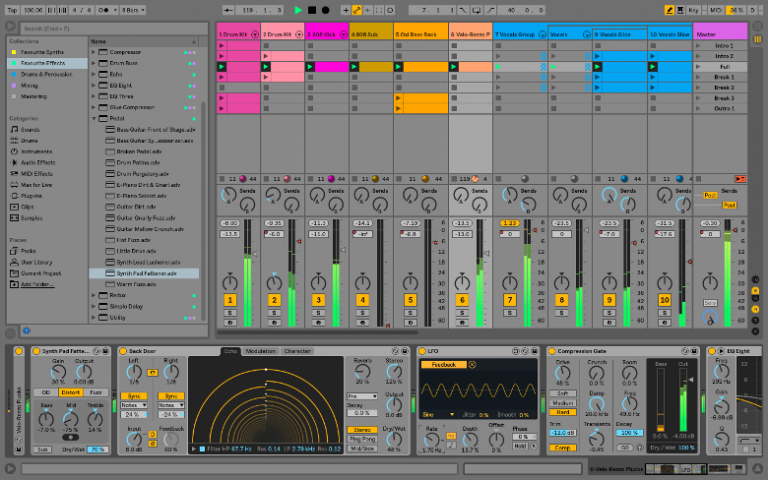


They’ll likely sound fake, sure, but that’s not necessarily a bad thing. Click the Rev button to reverse it or use the pitch shifters to create artificial harmonies. Other times, the prime recording part is merely the beginning of a wider journey of experimentation and manipulation.ĭrop a vocal into Simpler, Live’s sampler player, for example, and you’ve got yourself an instant keyboard part. Sometimes a vocal track serves as a document of a performance, something that actually happened, as opposed to something modular that can be assembled, chopped and changed on a whim. From here, clicking the Edit button in the Sample box will allow you to work on your audio in your chosen editing suite before bringing it back into Live.
Ableton live 10 free#
For more in-depth editing, you can go into the Preferences/File Folder and nominate your chosen sampler editor – Audacity is one of the most popular free examples. If your sound source – you or your vocalist – is too close to the mic, you’ll likely end up with a recording littered with plosives and breathing noises that you’ll only have to edit out afterwards if your source is too far from the mic, your recording will lack dynamics and presence, with the voice fading into the background noise of your neighbour’s radio and your perennially humming fridge.īasic audio editing can be completed within Live’s Arrangement view, where it’s easy to select, delete or move audio. Outside the box, the core variables when recording vocals are the voice itself and your microphone setup. It’s better and safer to record your vocals as cleanly as possible before dirtying them up afterwards.

Okay, if you’re recording on tape through an analogue mixer, you can perhaps push your meters a little and strive for that inviting analogue-distortion sound but, in the digital world, distortion is best left until the post-production stage. You never want to see your meters, be they on hardware or software, peaking red, because that will inflict irreparable distortion on your tracks. To make clean and tidy recordings, you need to be the boss of your gear, your room and especially the levels.ĭon’t go in too hot. After recording, for example, you can still move recorded clips between views, using copy and paste or the Context Menu’s Consolidate Time to New Scene command. More than with any other DAW, you’re never truly forced into anything with Live. Think of it as low-pressure DIY punk-rock recording – and Live as your modern-day 4-track cassette machine.Īfter configuring your preferences, decide which of Live’s two views to record in: Session is more reflexive and attuned to performances and jamming – if you’re putting down something that’ll be used in short chunks, resampled or looped, then this is the window you’ll want Arrangement, instead, offers a timeline-centred window that will feel familiar to users of other DAWs – if you’re looking at recording long takes, cutting an entire song with verses and choruses, for example, this is the place to be. It may not represent the ideal recording setting but there are significant advantages that come with setting up shop at home: you’ll be free from time limitations (unless you force them on yourself), and there should be nobody imposing their preferences on you, leaving you to experiment and discover your own tastes free from the biases of others. The economic reality, though, is that for a lot of people, it’s the only option. Home recording isn’t quite the glamorous tech-packed setting that many of us dreamt of as young music-industry upstarts.


 0 kommentar(er)
0 kommentar(er)
